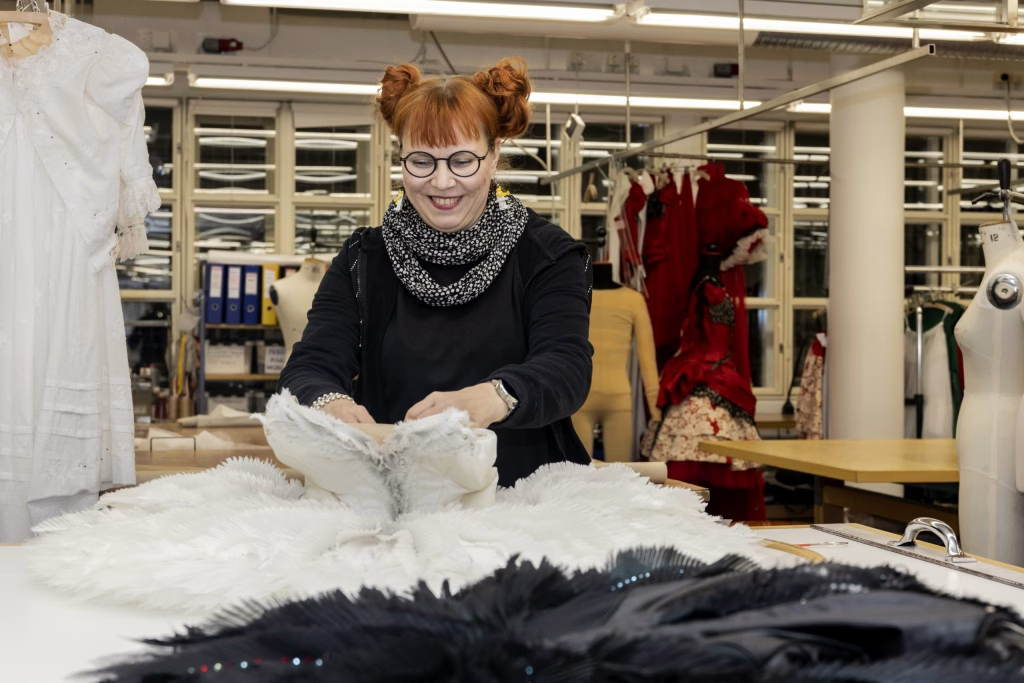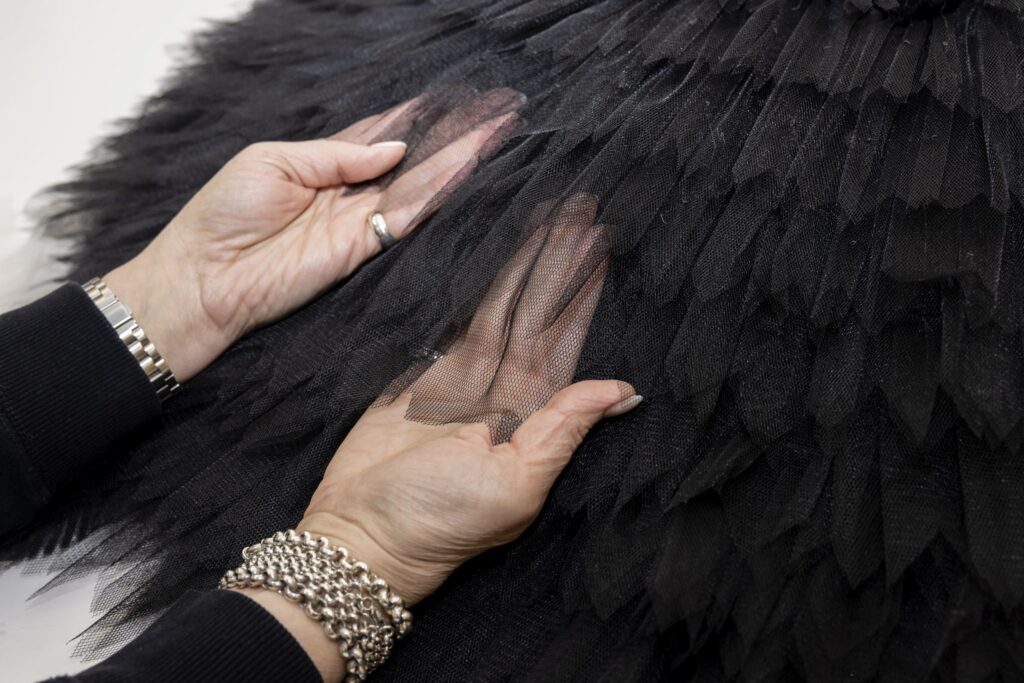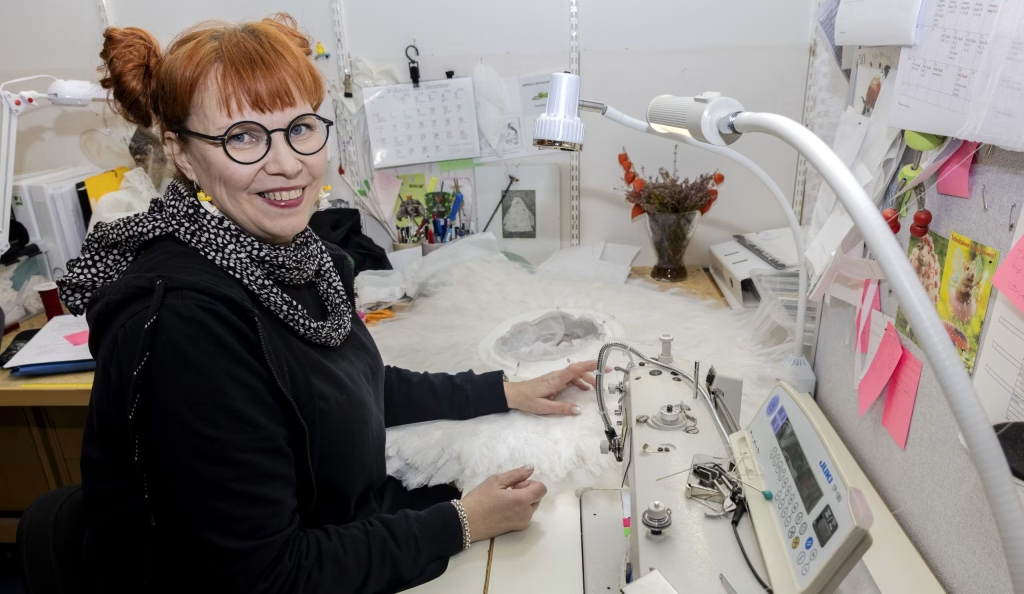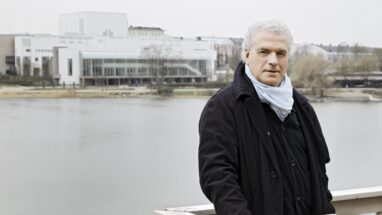
Seamstress Outi Riikonen
The Working at the Arts Factory article series showcases the people of the Finnish National Opera and Ballet and their wide variety of roles. This time around, we asked seamstress Outi Riikonen to explain what she does at the costume department of the Opera House.
I’ve graduated as a designer, with fashion design as my major subject. I initially came to the costume workshop of the Opera House as a trainee in 1999 and stayed on to cover for a colleague’s job alternation leave. I’ve been here ever since.
In fact, it was the tutus of ballet dancers that brought me here. I was, and still am, interested in the making of tutus, as there are so many things you must take into account in the process, even downright “secrets.” Every ballet company has their own way of making tutus. There’s hardly any literature about it, and no-one teaches it in Finland anymore. The only way to learn the trade is by watching and then trying to do it yourself, and that’s why I took up the traineeship at the Opera House. I danced ballet for a short while when I was little, too. Perhaps that helped spark my enthusiasm for tutus.
The sewing studio is part of the costume department, where seamstresses and tailors work together with hatters, jewellery makers, cobblers, dyers, and wardrobe supervisors. We make all the costumes to measure according to costume designers’ plans, so measurement-taking, pattern-making, fitting sessions, and alterations take up a lion’s share of our time. We seamstresses focus mostly on female performers’ costumes, while tailors create the majority of male costumes. We collaborate closely with wardrobe supervisors, whose responsibility it is to ensure that the right people wear the right costumes in a performance.

No two days are the same in this job. The content and schedule of my working day depend on which productions are being rehearsed and performed. We work simultaneously on both the operas and ballets in the current repertoire and the premieres and returning productions scheduled for later on.
We start our working week with a Monday morning meeting, in which we go over the upcoming week’s events. Every day, we write everyone’s tasks on a work allocation board. We can’t plan all our work in advance, however, as things can take unexpected turns. If a costume is broken, it must be fixed quickly for the next performance. Mending costumes that are needed urgently always takes precedence.
Life in the sewing studio is surprisingly fast and furious. Castings can change at a short notice for many reasons. If that happens, we must alter and remake the costumes for different performers, sometimes right before the beginning of a performance. At times we’ve been so rushed that there’s been four of us sewing a single hem at once. Costumes might also need alterations after the first dress rehearsal, for example if we notice that the hem length should be changed or the costume needs to be quicker to take off during changeovers. What’s more, costume designers based abroad can usually spend only short periods of time in Finland. To get as many costumes ready for fitting for those occasions, we need to be flexible and work longer hours than usual.

Tutu is a peculiar uniform, and you must take into account a lot of different things when making one. The bodice must fit its wearer snugly, while still allowing the broad arm and leg movements and folds involved in ballet. The basque and plate must be the right size and in balance with the dancer. Sometimes we construct the tutus in collaboration with the choreographer, so we can know for sure how flexible they need to be and take note of anything else of importance. The tutu must also be safe to wear, both for the dancer and her potential partner. The decorations can’t come off in the middle of a dance, because even the most minute object on the stage floor may cause someone to fall or slip. The fingers of the partner or another dancer can’t catch on the fabric, decorations or the fastenings. Finally, the dancers must be able to get close enough to each other. You need over eight metres of tulle for one tutu.
Though I’ve been making tutus for about two decades, I still find the process fascinating. Dressmaking is evolving all the time, like everything in performing arts, and costume designers are constantly coming up with new features and embellishments for their creations. In the ballet The Little Mermaid, for example, we attached small LED lights to the dancers’ outfits, and I soldered wires to connect the lights to the power source. I think it’s fun that my work involves so much more than just sewing straight seams every day. Having the opportunity to meet colleagues from other ballet companies is also really interesting, as you learn alternative ways of doing the same thing.
The creation process of every production is unique and every one of them stays with you. It’s always wonderful to see the costumes I’ve sewn in action on the stage. That’s when they truly come to life. Though I can’t say I have a particular favourite ballet or opera, I do find The Nutcracker and the Mouse King impressive time after time. Every aspect of it, all down to the wonderful music, comes together in such a marvellous way. When you see the same work several times, you notice very different things.

What I like best about working as a seamstress is the variability and the project format. So many things impact our work that we never know for sure what happens the next day, or even later on the same day. Though variability is the spice of our work, it’s also what makes it taxing. The unpredictability, the rush and the surprises can be stressful. There are days when everything seems to go wrong, but then the following day can be a string of successes. Sewing is also surprisingly tiring physically, as we spend long times sitting in front of the sewing machine, the costumes can be heavy, and we often work in ergonomically challenging positions. It’s important for us to take regular breaks and do different kinds of exercise in our free time.
I have a wide variety of interests. I like to learn and develop myself, so while working I’ve also studied craft sciences, behavioural sciences, and the history of arts, whatever happens to fascinate me at the time. Studying humanities is always time well spent. In my free time I’m a passionate scout, and I play active roles in both my local scout group and the Finnish scout movement in general. I also enjoy hiking and visiting theatres and museums.
It intrigues me how there are so many sides to us all. When I spent a year as a peacekeeper in Kosovo, it was fun telling people that in my civilian profession I make costumes for Finnish ballet dancers. That prompted a lot of surprised expressions!
Text PAULA RANTO
Photos MINNA HATINEN




